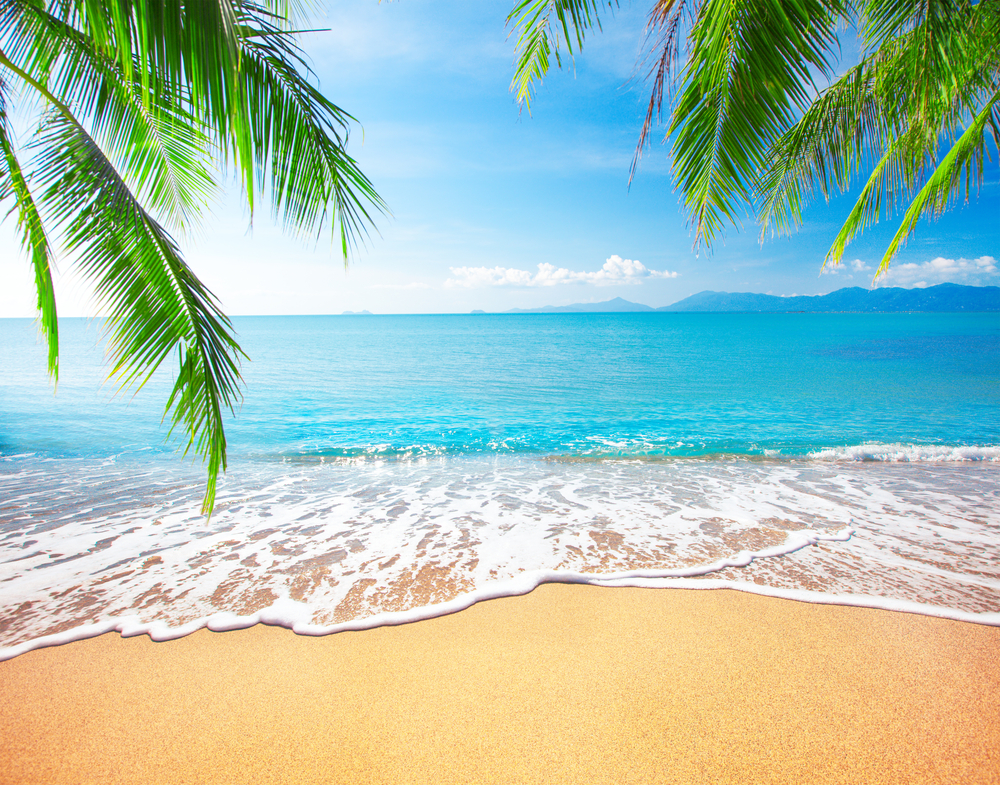
When Hunter Lane saw something bright blue in the sand on the beach, his search suddenly became exciting. The bright blue creature seemed to be a jellyfish, that Hunter had never seen before.
Had he discovered a new species? He took the animal home to show it to his parents.
1. At the Beaches of Texas
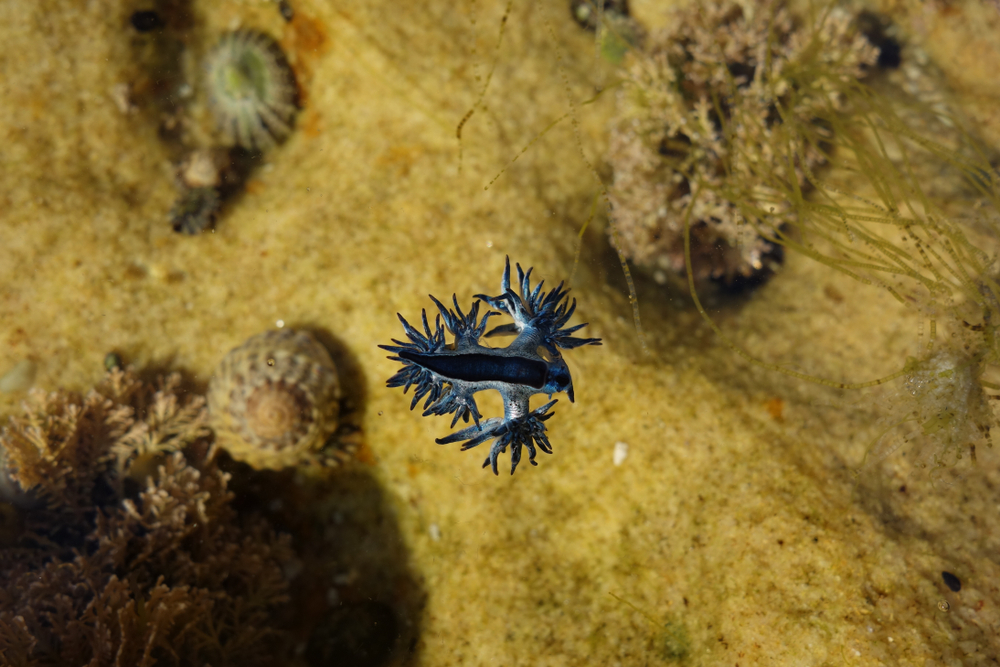
If you consider the eye-catching color and the strange shape of the creature, you might understand why it caught Hunter’s attention.
The blue color was a strong contrast to the sand of the beach.
These extraordinary creatures must have astonished many Texans, when they were washed to the States’ beaches.
2. A Small Dragon
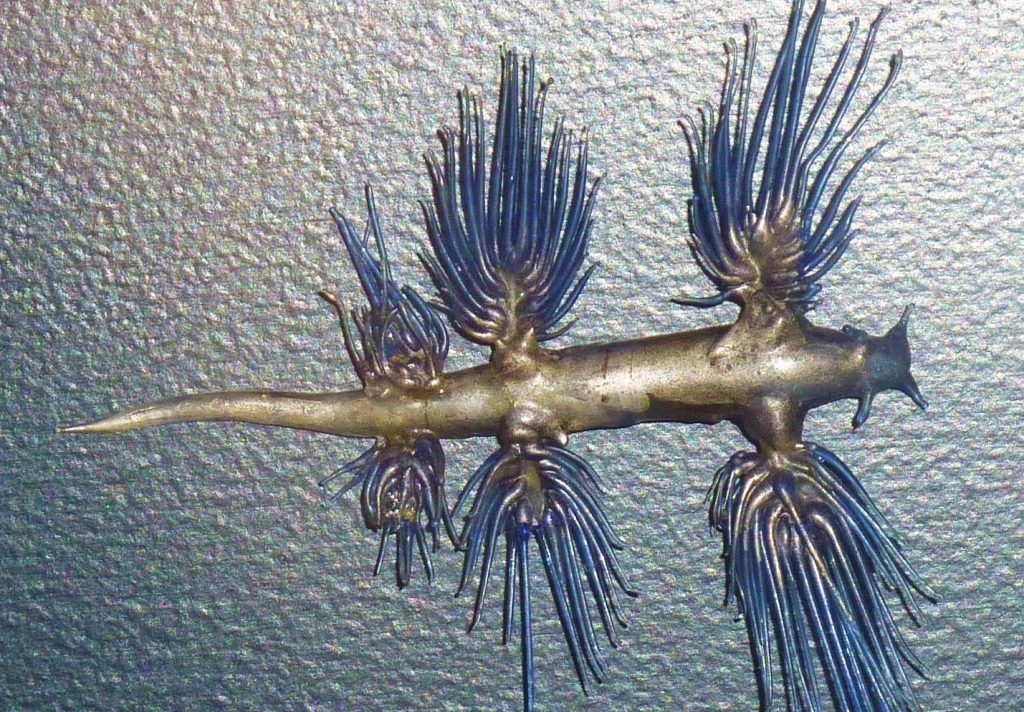
But it was not only the eye-catching color of this mysterious life form, which interested the people on the beach. Its shape was similar to a dragon and naturally awoke the curiosity of the people taking a walk.
Winglike growths with dark tips were at different areas on the body’s side.
3. Rare and Dangerous
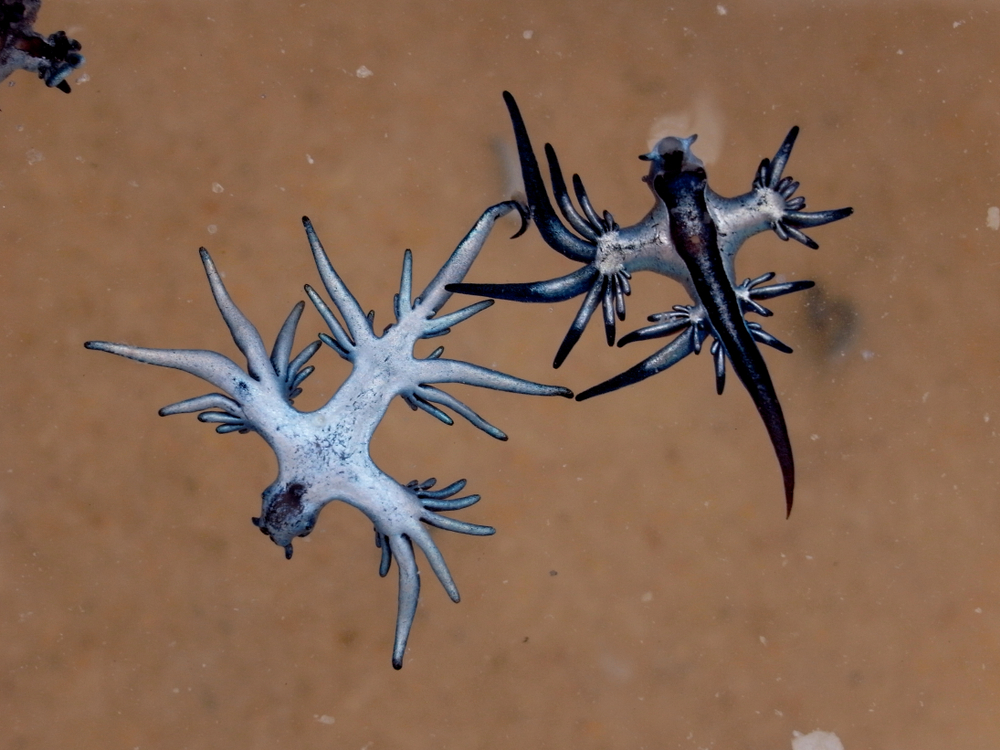
Just like Hunter certainly many people assumed that these creatures were a still completely unknown species.
And while experts knew the creatures already, the animals are still extremely rare — and they can be incredibly dangerous. Therefore, visitors must follow the advice of the Rangers in reference to the intruders.
4. Warning of the Padre Island National Seashore (PINS)
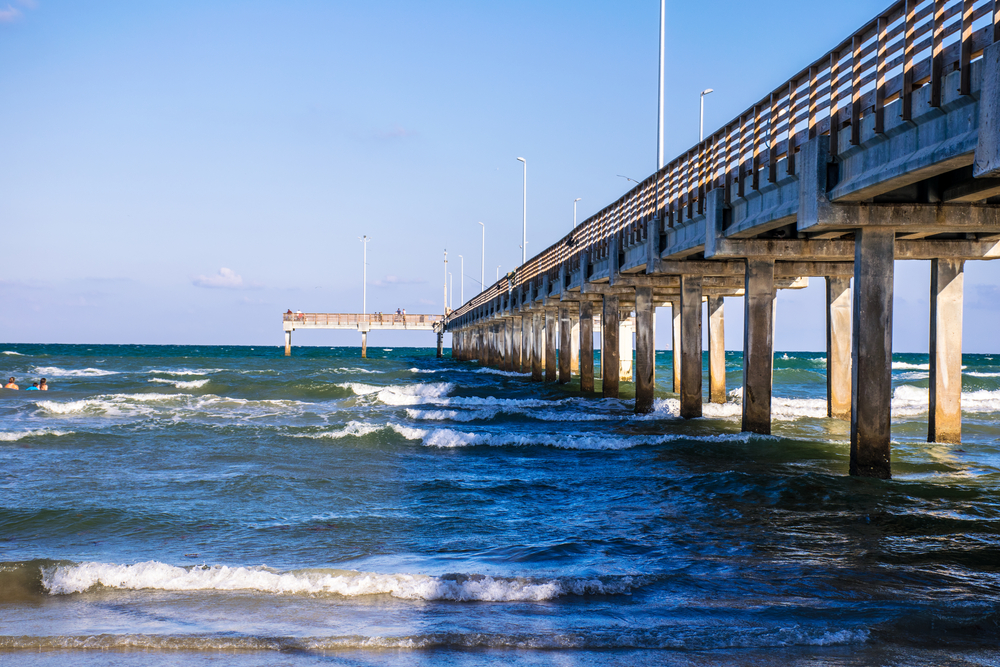
PINS, in fact, issued a warning about the creatures.
If you see one of the wild blue animals on the beaches, you should not approach them under any circumstances.
Stay at a distance and do not touch them, because these spectacular visitors are a bigger danger than you can imagine.
5. Hunter’s Visit at the Padre Island National Seashore Park

Unfortunately, Hunter did not receive this message and had no idea what he had found.
The seven-year-old boy had made the discovery at a beach of the Padre Island National Seashore Park. He visited the park with his parents, Trey and Leah Lane, in May 2020, when he discovered this creature.
6. Hunter’s Passion for Sea Life
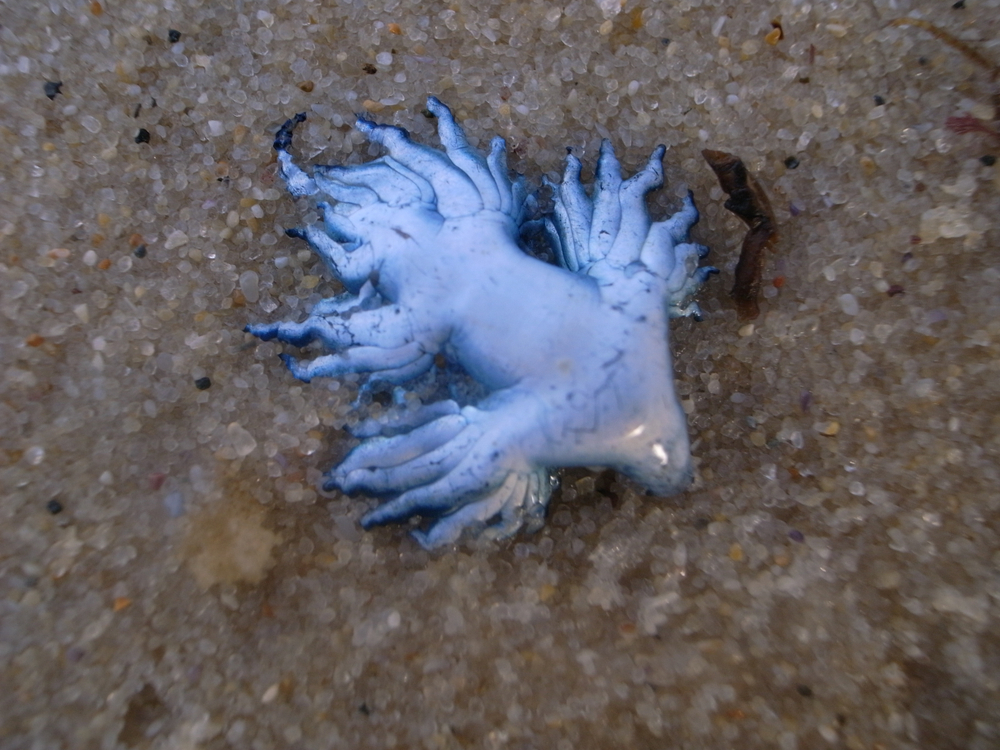
The officials at Padre Island reported that Hunter had been one of the first persons to find such a rare animal on the beach.
But why did Hunter search the beach anyway?
His father Trey told CNN about his son’s passion for sea life, which had led him to this finding.
7. Hunter and His New Animal Species

First, Hunter thought he had found a blue button jellyfish.
Therefore, Hunter picked the animal up with a toy and took it with him to proudly present it to his father.
The boy soon realized that he had found something different and told his father he had found a new species.
8. The Extraordinary Discovery
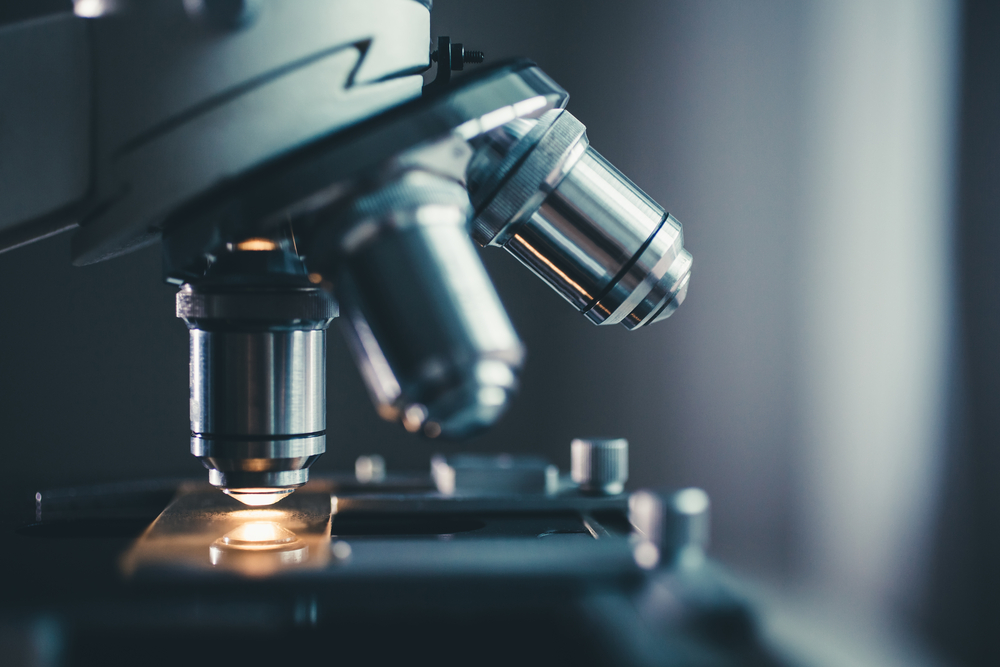
Hunter was extremely enthusiastic about his outstanding discovery.
Leah recalls that her son wanted real bad to touch the creature “because it looked so squishy”. But even at his age Hunter knew that it would have been a mistake.
He was smart enough to decide against petting the magical animal.
9. Glaucus atlanticus — the Blue Dragon

PINS identified the creature as Glaucus atlanticus or blue Dragon. It was not a jellyfish, as Hunter had assumed. But what was it? Scientifically, it is a mollusk out of the group of clams, octopuses and common garden snails.
Even though that doesn’t sound dangerous, the animal can cause some damage.
10. The Looks of the Blue Dragon
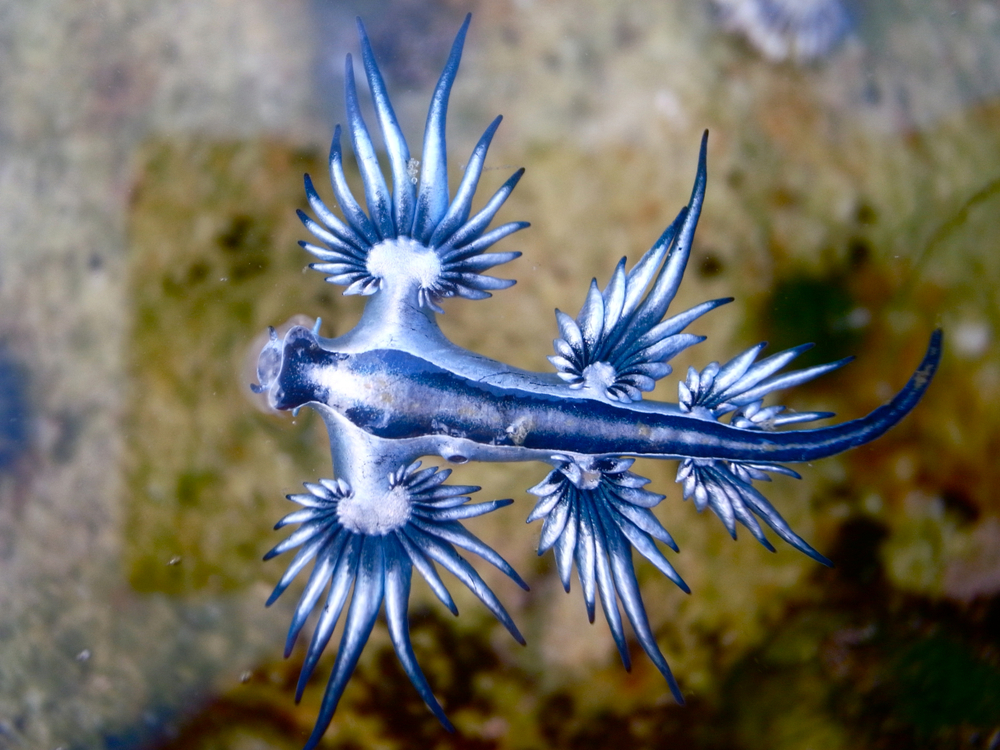
Mollusks are aniamals without spine and bones. Some have developed houses, shells, in order to protect themselves
The blue dragons belong to the mollusks that don’t develop shells.
Their name derives from the horn-like appendages on their backs, which really are soft gills for breathing. Further the mollusks have tentacles.
11. Reason for the Blue Body Color

The tentacles of the blue dragons are called rhinophores. They grow in pairs on the mollusk’s head and are sensory organs. With them the mollusks find nourishment. The nourishment is responsible for their blue color.
Blue dragons often live among corals and anemones, their nourishment and reason for their color.
12. Vicious Predators and Hunters
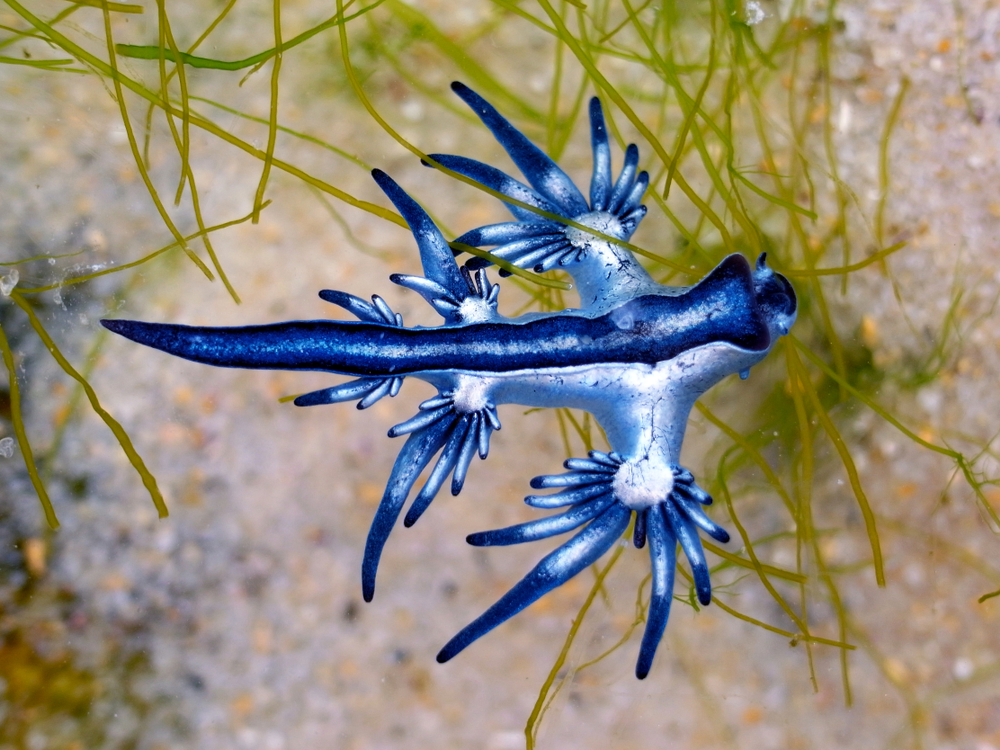
Their color allows the mollusks to blend in with their environment. The blue dragons are aggressive hunters and feed on prey, which other animals avoid.
The name indicates huge seize, but the blue dragons average only about an inch in length. Though small, they have similar traits as a dragon.
13. Movement of the Blue Dragons in the Water

Blue dragons swim upside down and move with help of the finger-like appendages on their sides.
The Smithsonian Magazine describes they possess stomach sacs filled with gas, which support their swimming. The light blue is on the underside and warns predators passing by that the mollusk is not on their menu.
14. Living Environment of the Blue Dragon
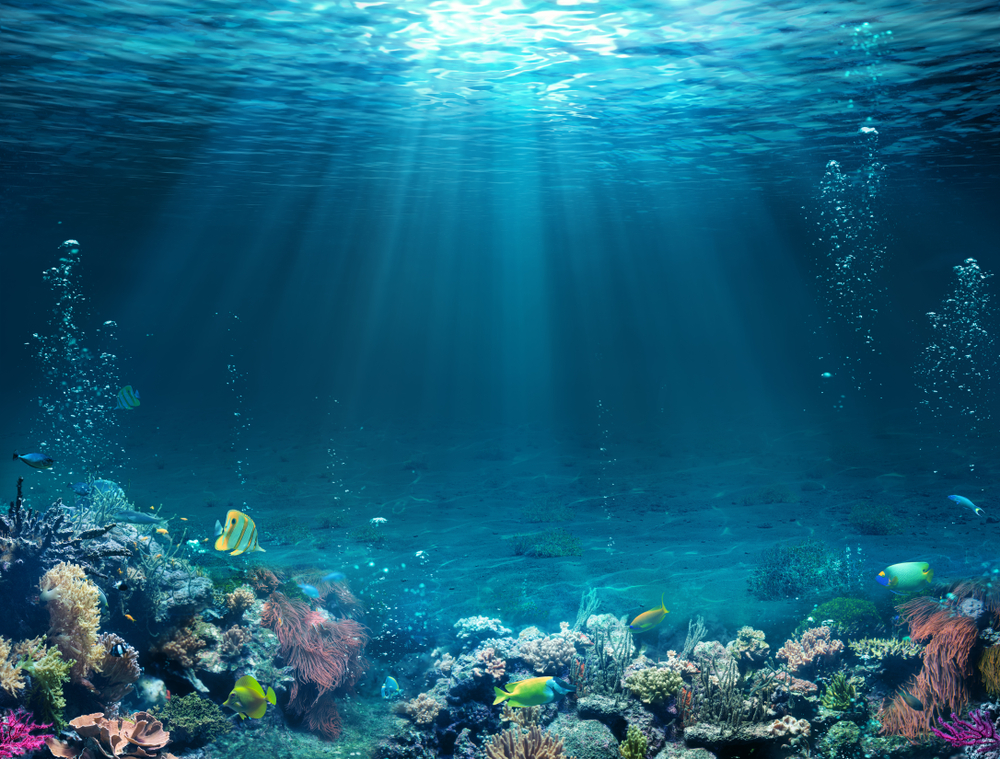
The darker part protects the animal from predators under them.
But how could animals out of tropical waters come to the Texas beaches? Normally they live in the oceans around Australia, South Africa and Mozambique.
Florida Today reports findings during the past years. In 2017 some of them were washed ashore there.
15. Blue Dragons or also Sea Swallows or Blue Angels
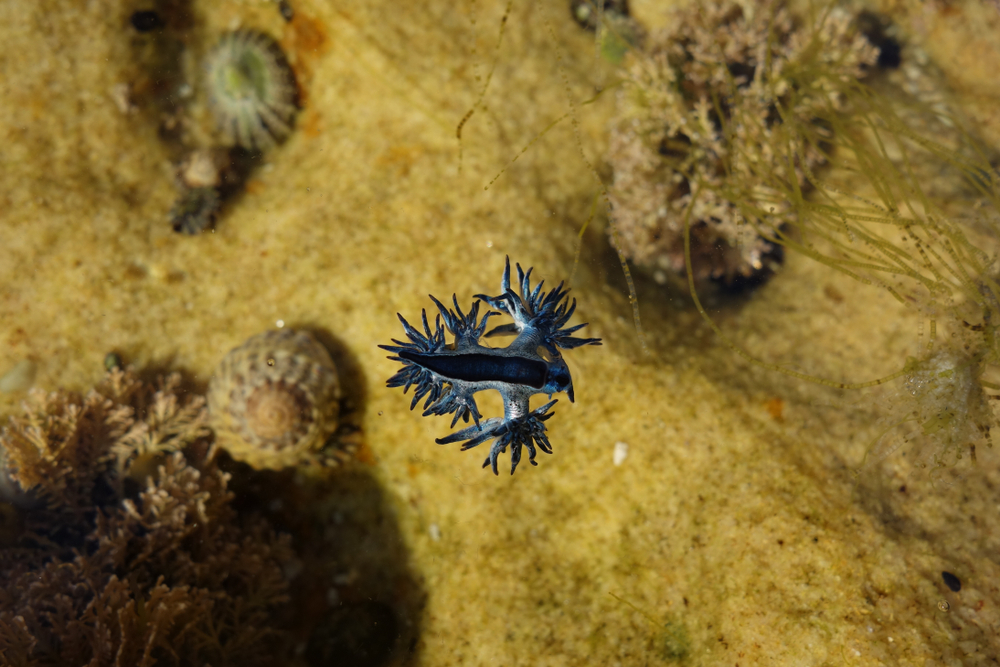
The rare sea animals surprised some visitors to Cape Canaveral beach. They were not as wise or had less luck than Hunter.
They touched the blue dragons and found out, why they carry that name.
The blue color lead to names such as sea swallow or blue angel. These names conceal their devilish qualities.
16. First Sighting of the Blue Dragon
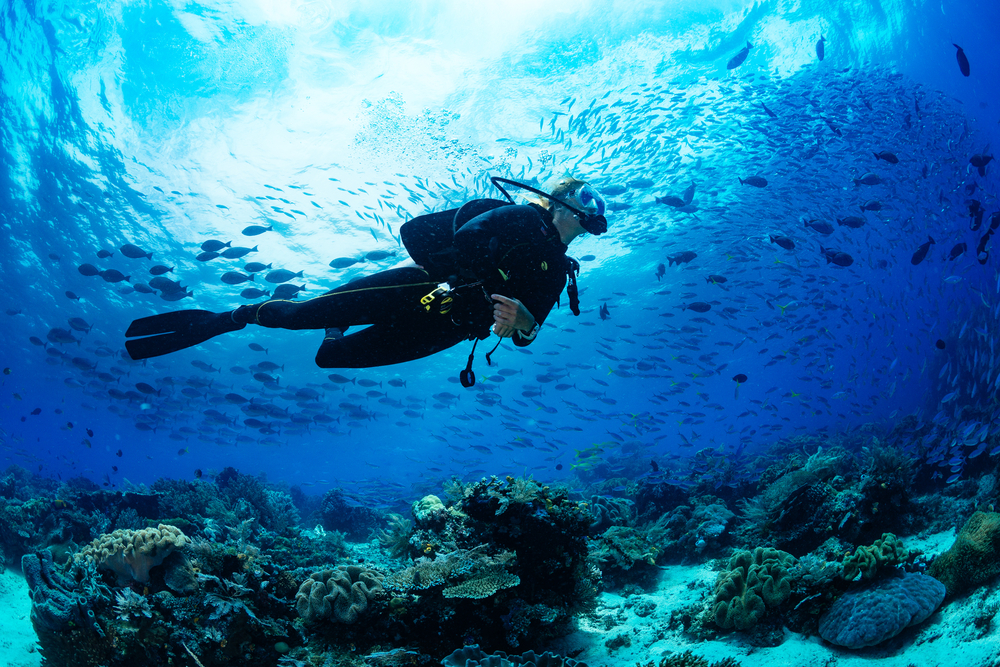
In the year 1777 explorers found the first blue dragon and kept written records of it. But a live specimen was caught almost 100 years later.
This merit is attributed to the team of a famous expedition, which left London in 1872.
The name of the famous ship was HMS Challenger.
17. The Discoveries of the HMS Challenger
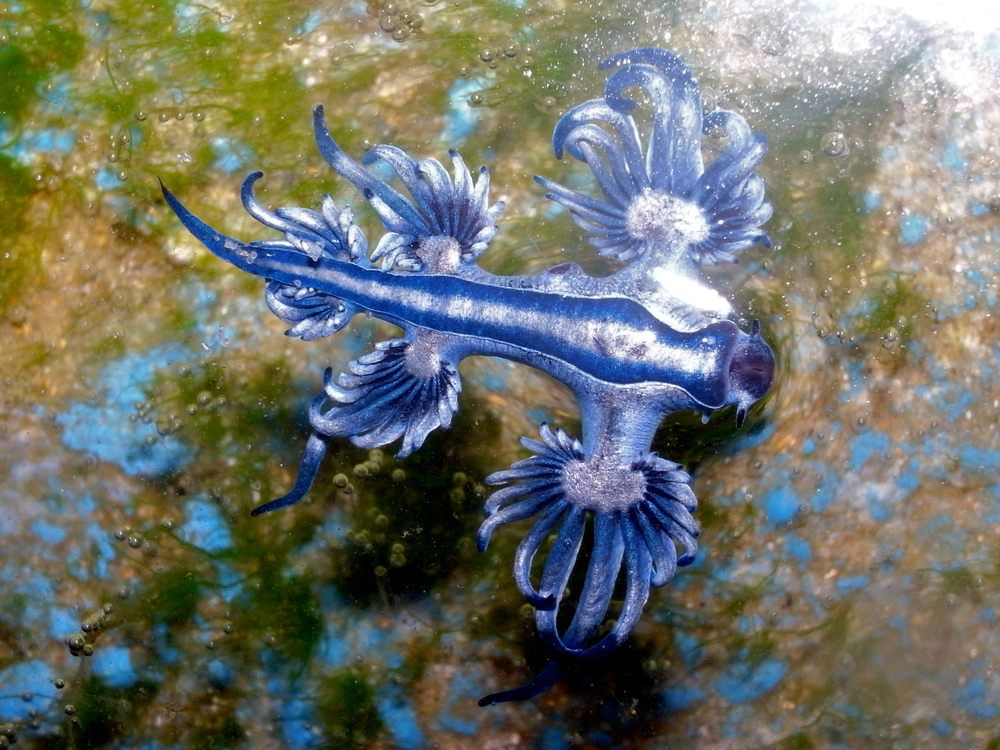
The challenger was a swimming laboratory supposed to explore the oceans and to keep records of the findings. On the journey 4700 sea creatures unknown to scientist until that time were found and specimen collected.
One finding was a 1,2 inch long blue Dragon, which the scientiets conserved with glycerine.
18. National History Museum in London

The blue dragon found by the Challenger Team was donated to the National History Museum in London, where it is still located. Why exactly are these beautiful creatures so dangerous?
In order to answer that question correctly and completely, we have to take a look at the animals’ feeding habits.
19. Nourishment of the Blue Dragon
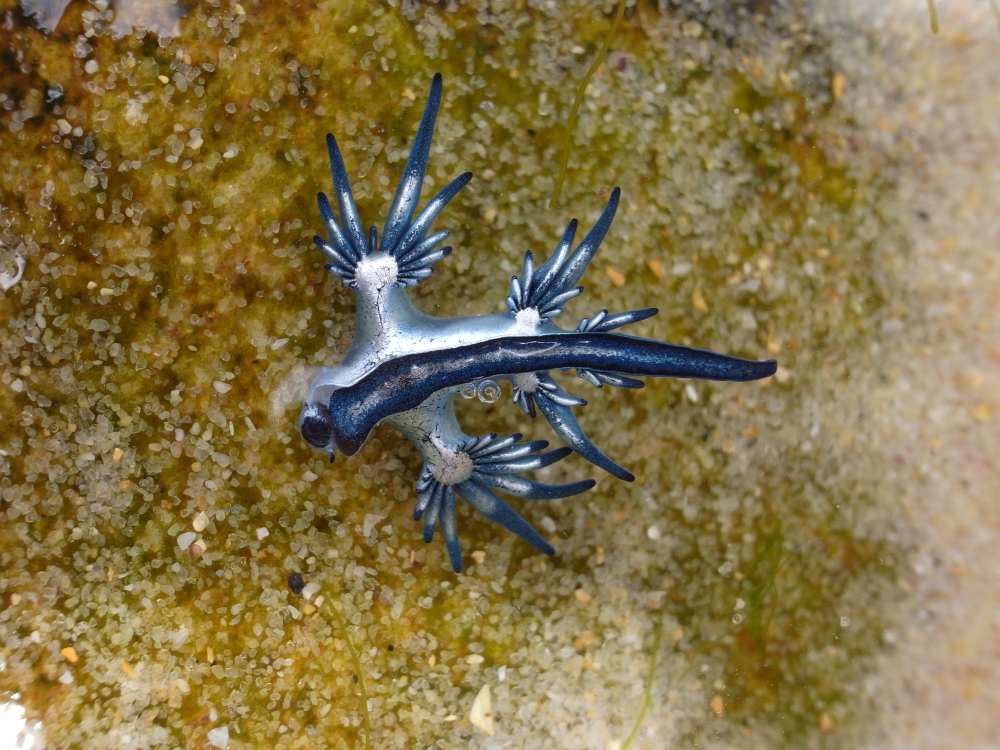
In the food chainjellyfish and poisonous sea animals are below the blue dragon. Mollusks have developed a method to not only feed but use their nourishment as means of self-defense.
They absorb the poison of much bigger animals among them even poisonous siphonophores as Physalia physalis with stinging tentacles.
20. Physalia Physalis (Portuguese Man o’War)
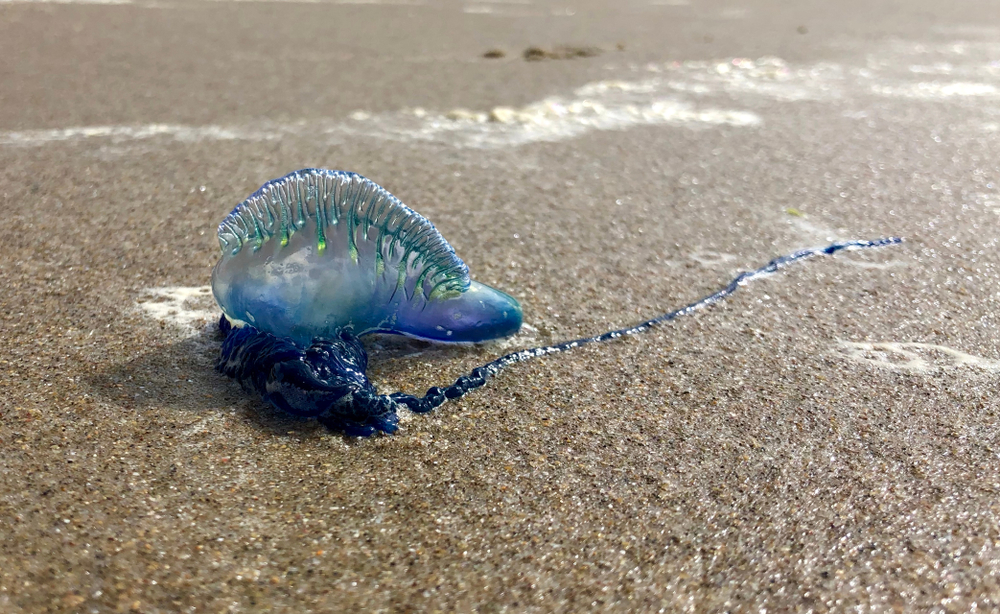
The tentacles of the Portuguese man o’war are covered with poisonous nematocysts. The animal uses them to kill its prey.
They don’t deter a blue Dragon. He is immune against the poisonous tentacles and only considers them as available food. Hereby the gas filled stomach sac comes in to use.
21. Self-Defense of the Blue Dragon
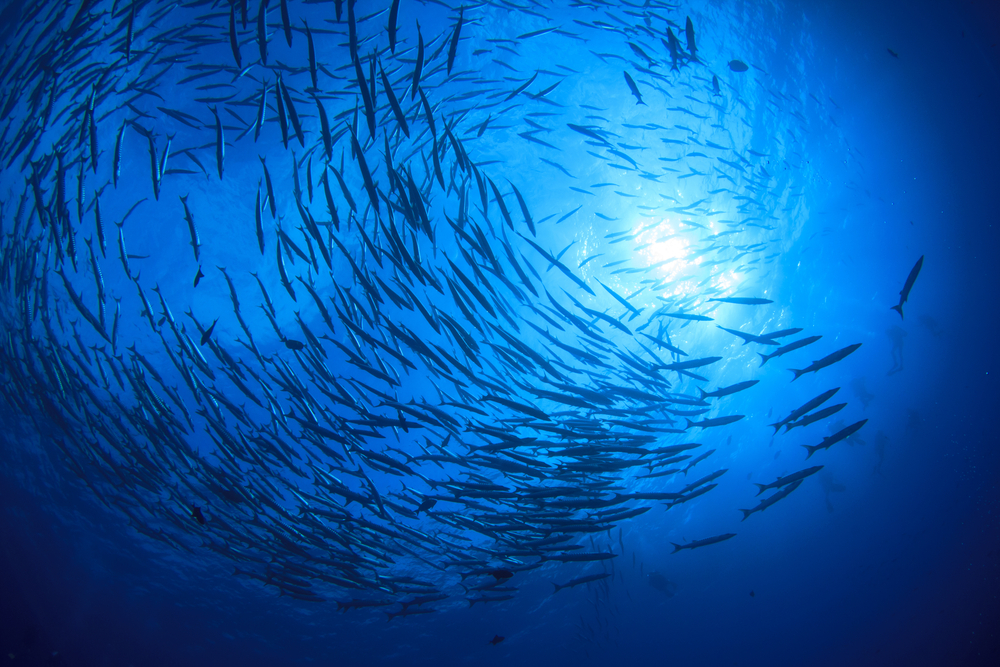
A blue dragon clings to its prey with his feet and feeds on the nematocysts. He absorbs their poison and stores it in the tips of his appendages.
He uses the poison in order to defend himself against predators.
Concentrated in one spot, it is very effective and causes big pain.
22. Hunter on the Facebook Page of PINS
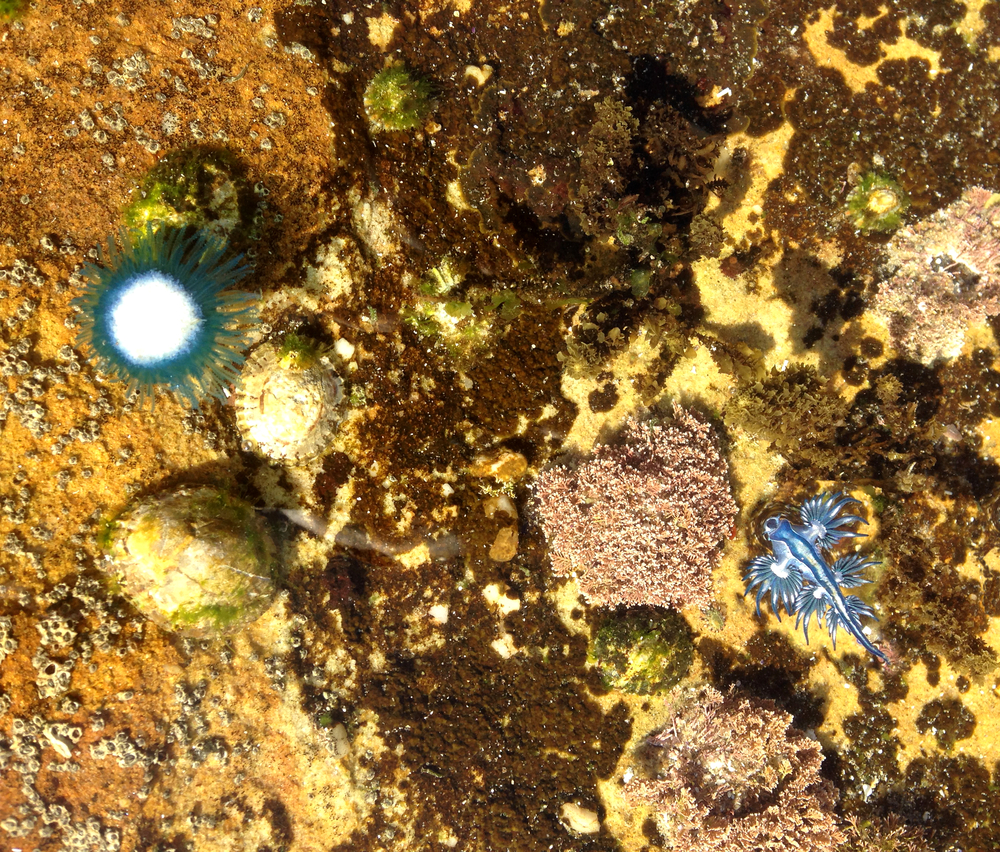
Due to Hunter’s finding of a blue dragon at Padre Island PINS published the boy’s photo in May 2020 on its Facebook page.
The photo was accompanied by wise warnings, addressing those who would love to touch these colorful creatures. Under this post were the disquieting words: “Here there be dragons.”
23. PINS’ Facebook Post

PINS explained: “Blue dragons are very small, normally only a little over an inch long. But don’t let that size fool you, they have a defense that’s worthy of a dragon“.
The visitors should observe it, but not touch it.
“A blue dragon is a rare finding, but keep your distance!”
24. Interview with Hunter and his Mother Leah

Leah and Hunter admitted the temptation of touching the blue dragon to the TV Station KSAT.
Leah said: “Hunter wanted to touch it and I don’t blame him, because I wanted it also. It looked so soft and squishy.”
“Since we didn’t know what it was, we decided against it.”
25. Continuation of the Interview

Leah continued: “Hunter thought about it and even assumed that the blue color was a warning as it is in the case of the poison dart frog.”
What a smart kid!
But there is still the secret of how the blue dragons came to Padre Island in the first place.
26. Information to CNN

Trey informed CNN he had been visiting Padre Island for 30 years, and he had never seen a blue dragon. He is not the only one who saw the breath-taking animals for the first time.
Jamie Kennedy, a spokeswoman for PINS, also saw a blue dragon for the first time.
27. Information About Blue Dragons Dating Back to the Year 2016
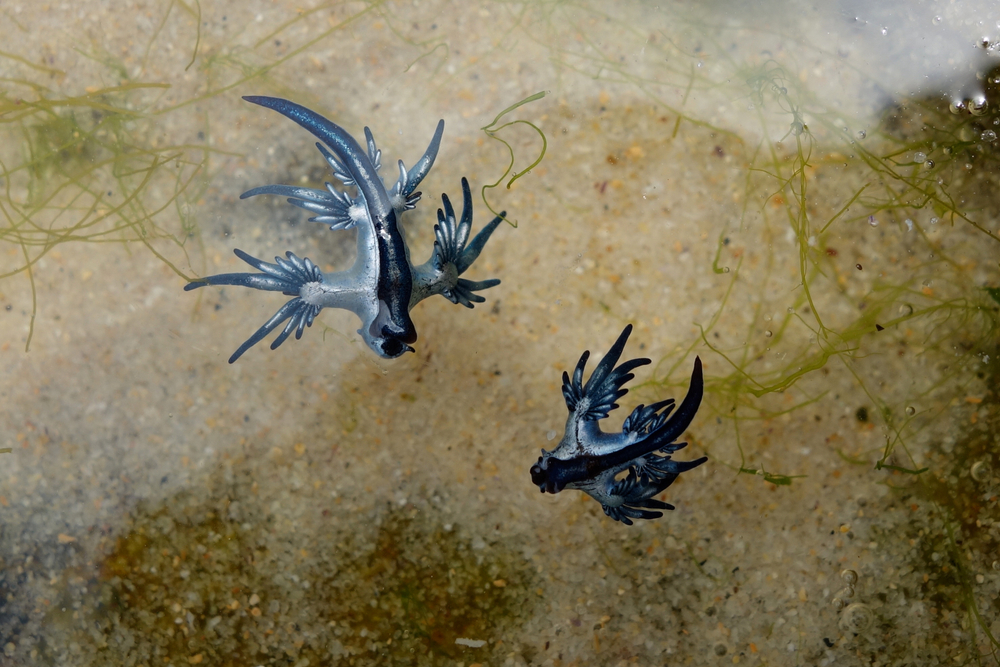
Kennedy, who has been working for PINS for two years, saw her first blue dragon here. As the Facebook page of PINS shows, the sightings have increased in recent years.
There were some photos of blue dragons with information about them, which PINS had uploaded in the year 2016.
28. Blue Dragons on Padre Island

Kennedy remarked that many people have been finding blue dragons on Padre Island recently.
She had a theory why so many appeared on Padre Island. She thought that a large group ob blue dragons had been washed over the beach at the same time. Some other experts agreed to that.
29. Information from KSAT and KVEO
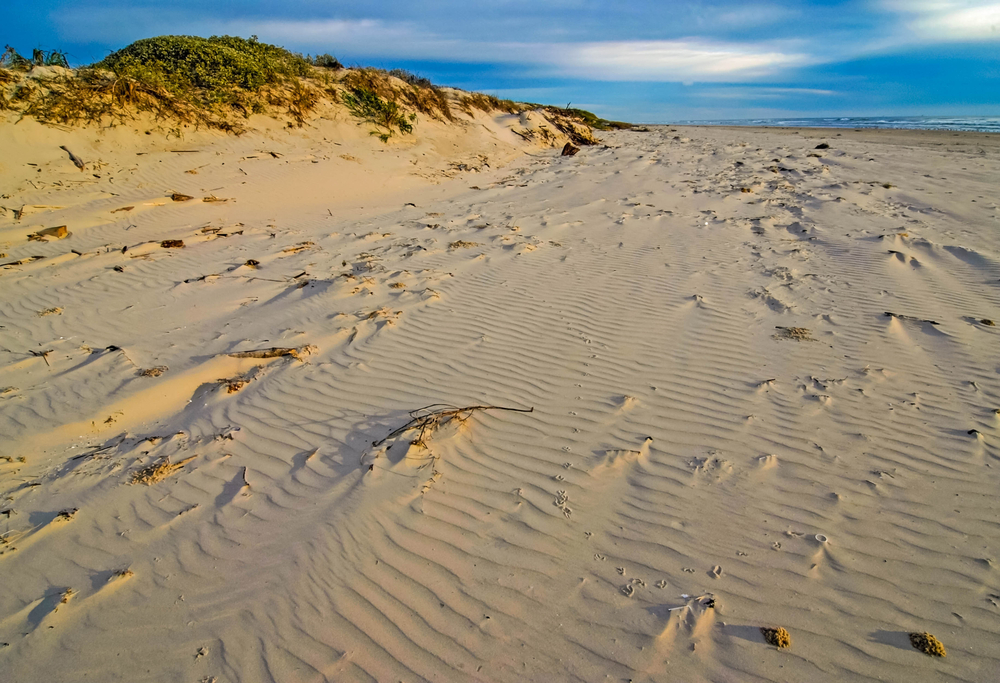
According to KSAT another PINS Spokesman agreed: “A lot of people recently find blue dragons”. “It often happens that large amounts of animals are washed ashore at the same time”.
Another wildlife expert confirmed this and elaborated on the subject in an interview with the TV Station KVEO in May 2020.
30. Sightings of Blue Dragons
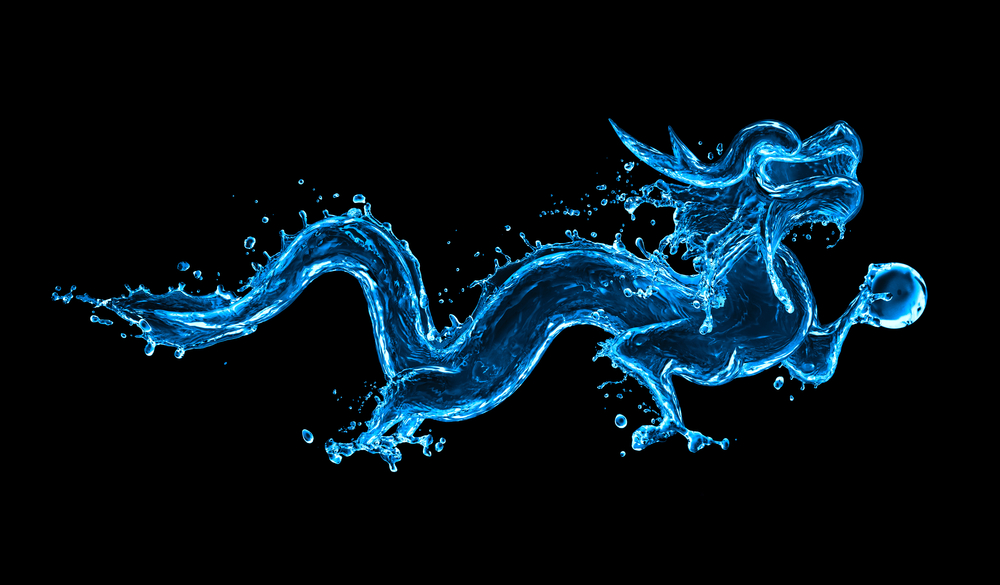
David Hicks, University of Texas Rio Grande Valley, told KVEO, that with sightings of blue dragons it was all or nothing.
The Director of the School of Marine Sciences said: “It is rather rare. We don’t see many of them“. But when one is sighted, then soon you will sight 1000.






